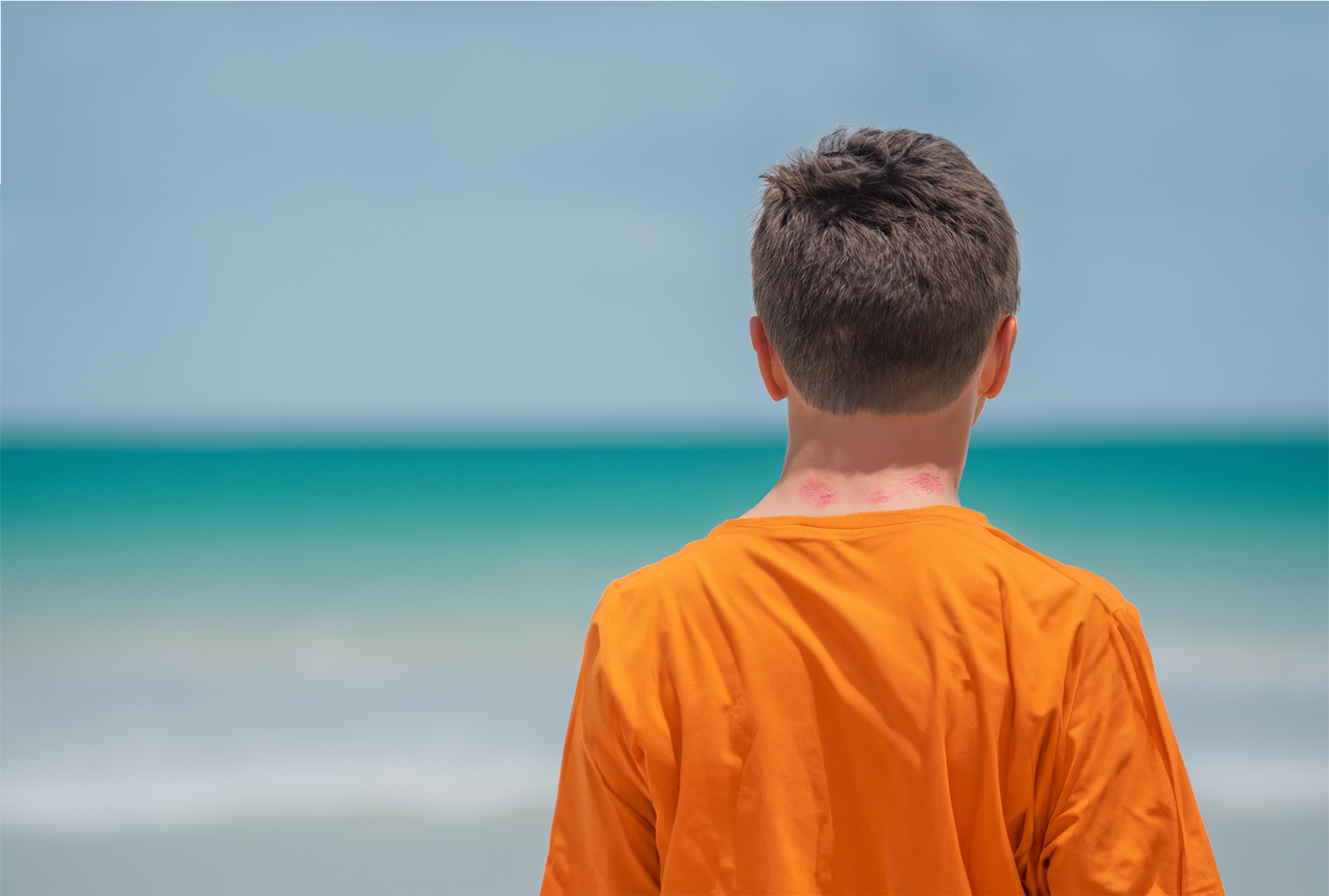How to Treat and Prevent Back Acne

If you’re prone to getting pimples on your back, shoulders or buttocks, you know how painful and annoying they can be. Are you doing something that’s causing them? Are body breakouts really different than acne on the face? How can you get rid of back acne and prevent it from coming back?
According to dermatologists Fleta Bray, M.D., and Jonette Keri, M.D., Ph.D., with the University of Miami Health System, acne on the back (or “bacne”) is typically caused by the same triggers as facial acne.
What causes bacne?
Acne is an inflammatory condition of the pilosebaceous unit, which produces hormones and includes the hair follicle, hair shaft and sebaceous gland.
Pimples or acne can be caused by:
- bacteria
- oil-production
- hormones
- genetics (acne is a condition that can run in your family)
- diet – What foods can cause acne? High-glycemic foods like white bread, white rice and white pasta
- stress
- friction (like tight clothing, which can trap sweat)
- certain medications
Small, acne-like bumps called folliculitis are a bit different and are caused by inflammation of the hair follicles, typically on the back, thighs, buttocks and upper arms.
Figuring out the cause of your pimples may be harder than treating them.
How to treat back acne
Don’t be tempted to squeeze or pop pimples, which can further aggravate the skin, spread bacteria to nearby skin, cause scarring and even trigger more pimples.
Doctors Bray and Keri recommend using the same topical treatments on your back and body that can help clear up and prevent facial acne.
Try over-the-counter acne-fighting products.
Lather your back with a body wash containing benzoyl peroxide. Let it sit for a few minutes on the affected areas, then rinse. Be aware that benzoyl peroxide can bleach fabrics like towels and clothing.
Don’t forget to exfoliate.
Avoid scrubbing acne-prone areas of your body with a loofah or using a body scrub with microbeads, which can irritate already inflamed skin or cause tiny abrasions that can get infected or break out.
Instead, use a chemical exfoliant, like a body wash containing salicylic acid or glycolic acid, twice a week.
If your skin reddens, itches or dries out, use it less often and apply an oil-free moisturizer to help calm the skin. If your skin and acne respond well to a chemical exfoliant, you can use it daily or every other day to help prevent future breakouts.
Consider prescription medications.
If you try all of this and you’re still getting bothersome pimples on your body, speak with a dermatologist about prescription therapies. Your options may include taking antibiotics or applying retinoid-containing products to the skin. Retinoids are FDA-approved to treat acne and are available as gels, creams, foams and liquids. Your doctor can help you choose the right product type for your skin.
When prescribing any medication for acne-prone skin, your doctor will consider how it may interact with other medications you take, including birth control.
How do I stop bacne from returning?
According to doctors Bray and Keri, if your back or another part of your body often develops pimples, use only non-irritating, non-comedogenic, oil-free products on your skin (including sunscreen). Use laundry detergents designed for sensitive skin to wash your clothing, sheets and towels.
Because body pimples can be caused by rubbing or getting sweat trapped against the skin, avoid friction with your clothing, belts, zippers, backpacks and chair backs.
Rinse off after going to the gym or sweating heavily.
Written by Dana Kantrowitz, a contributing writer for UHealth’s news service. Medically reviewed by Fleta Bray, M.D., and Jonette Keri, M.D., Ph.D., dermatologists with the University of Miami Health System.
Tags: Back acne prone skin, dermatology care in Miami, Dr. Fleta Bray, Dr. Jonette Keri, skin breakout
